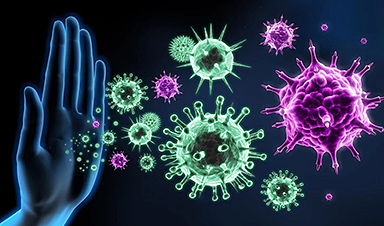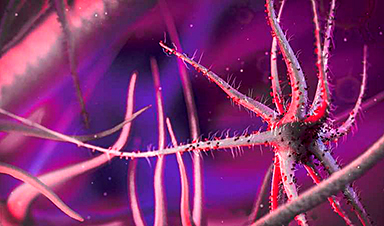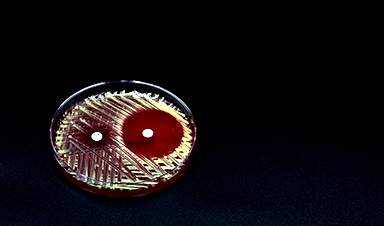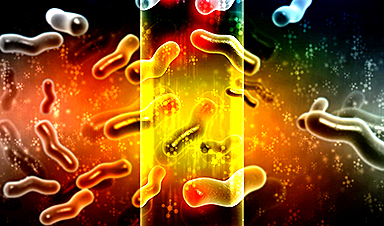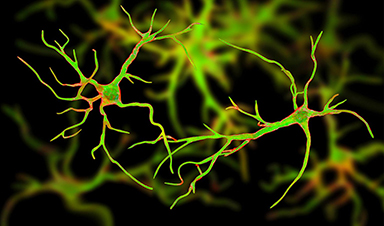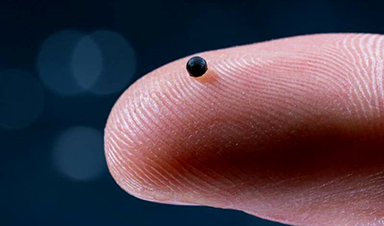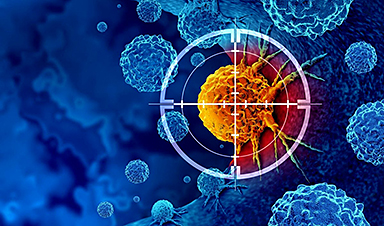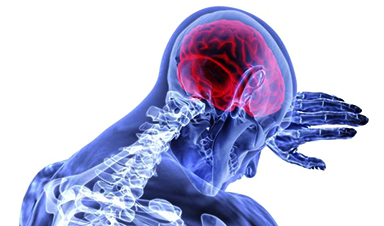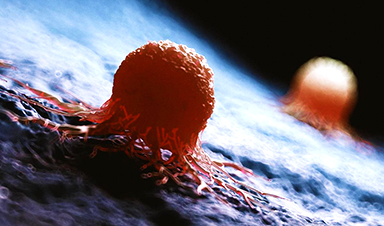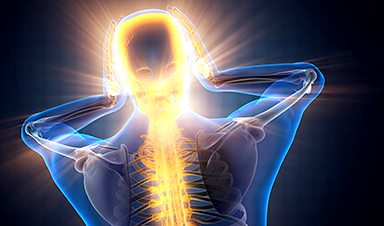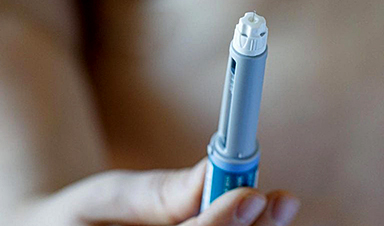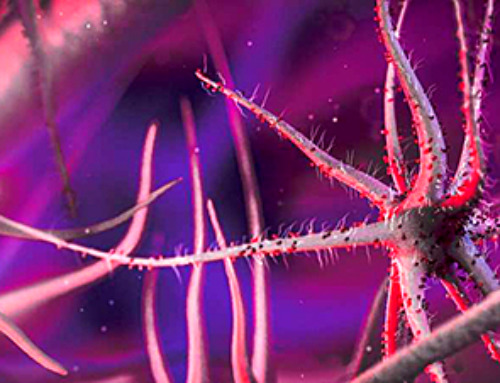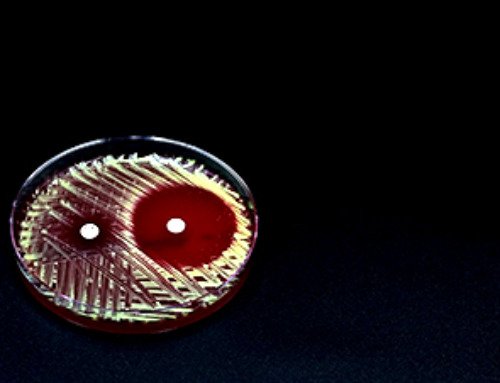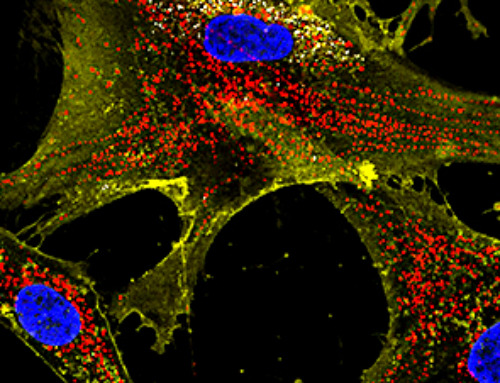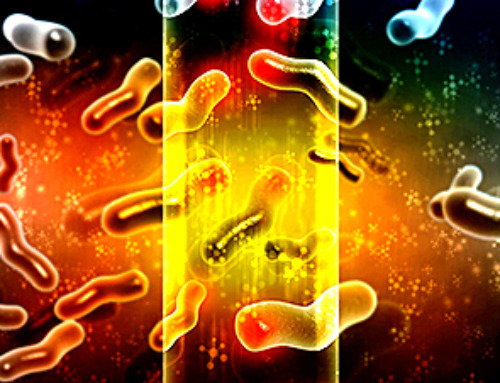Some people carry a rare mutation that makes them resistant to viruses.
Now scientists have copied that effect with an experimental mRNA therapy that stopped both flu and COVID in animal trials — raising hopes for a universal antiviral.
Rare Mutation Unlocks Viral Immunity
For only a few dozen people worldwide, living with a rare immune disorder comes with an unexpected advantage: the ability to resist every virus that comes their way.
About 15 years ago, Columbia immunologist Dusan Bogunovic first uncovered this remarkable protection shortly after identifying the genetic mutation behind the condition.
Initially, the disorder appeared to simply make people more susceptible to certain bacterial infections. But as more cases were studied, a surprising benefit became clear. Bogunovic, now a professor of pediatric immunology at Columbia University's Vagelos College of Physicians and Surgeons, found that everyone with the mutation, which leads to a shortage of an immune regulator known as ISG15, experiences mild but persistent whole-body inflammation.
Hidden Antiviral Clues
"The type of inflammation they had was antiviral, and that's when it dawned on me that these individuals could be hiding something," Bogunovic recalls. When he and his colleagues looked at the individuals' immune cells, they could see encounters with all sorts of viruses—flu, measles, mumps, chickenpox. But the patients had never reported any overt signs of infection or illness.
"In the back of my mind, I kept thinking that if we could produce this type of light immune activation in other people, we could protect them from just about any virus," Bogunovic says.
Now, after years of research, he is developing a potential therapy that could replicate this unusual form of protection and serve as a powerful safeguard in the next pandemic.
Breakthrough Experiment Shows Promise
In his latest study, published on August 13 in Science Translational Medicine, Bogunovic and his team report that an experimental therapy they've developed temporarily gives recipients (hamsters and mice, so far) the same antiviral superpower as people with ISG15 deficiency. When administered prophylactically into the animals' lungs via a nasal drip, the therapy prevented viral replication of influenza and SARS-CoV-2 viruses and lessened disease severity.
In cell culture, "we have yet to find a virus that can break through the therapy's defenses," Bogunovic says.
How the Therapy Works
Bogunovic's therapy is designed to mimic what happens in people with ISG15 deficiency, but only for a short time.
Instead of turning off ISG15 directly—which leads to the production of more than 60 proteins—Bogunovic's therapeutic turns on the production of 10 proteins that are primarily responsible for the broad antiviral protection.
The current design resembles COVID mRNA vaccines but with a twist: Ten mRNAs encoding the 10 proteins are packaged inside a lipid nanoparticle. Once the nanoparticles are absorbed by the recipient's cells, the cells generate the ten host proteins to produce the antiviral protection.
"We only generate a small amount of these ten proteins, for a very short time, and that leads to much less inflammation than what we see in ISG15-deficient individuals," Bogunovic says. "But that inflammation is enough to prevent antiviral diseases."
Next-Gen Pandemic Preparedness
Bogunovic's team views their technology as a weapon against the next pandemic, providing protection for first responders, individuals in nursing homes, and family members of infected individuals, regardless of the responsible virus.
"We believe the technology will work even if we don't know the identity of the virus," Bogunovic says. Importantly, the antiviral protection provided by the technology will not prevent people from developing their own immunological memory to the virus for longer-term protection.
But the technology's drug delivery and absorption properties still need optimization. When delivered to animals via nanoparticles, the 10 proteins were produced in the lungs, "but probably not at high enough levels that makes us comfortable going into people immediately," Bogunovic says.
Fine-Tuning for Human Use
"Once the therapy reaches our cells, it works, but the delivery of any nucleic acid, DNA or RNA, into the part of the body you want to protect is currently the biggest challenge in the field." The researchers also need to determine how long the therapy's antiviral protection will last, currently estimated at three to four days.
"Our findings reinforce the power of research driven by curiosity without preconceived notions," Bogunovic says. "We were not looking for an antiviral when we began studying our rare patients, but the studies have inspired the potential development of a universal antiviral for everyone."
Reference: "An mRNA-based broad-spectrum antiviral inspired by ISG15 deficiency protects against viral infections in vitro and in vivo" by Yemsratch T. Akalu, Roosheel S. Patel, Justin Taft, Rodrigo Canas-Arranz, Rachel Geltman, Ashley Richardson, Sofija Buta, Marta Martin-Fernandez, Christos Sazeides, Rebecca L. Pearl, Gayatri Mainkar, Andrew P. Kurland, Haylen Rosberger, Diana D. Kang, Ann Anu Kurian, Keerat Kaur, Jennie Altman, Yizhou Dong, Jeffrey R. Johnson, Lior Zangi, Jean K. Lim, Randy A. Albrecht, Adolfo García-Sastre, Brad R. Rosenberg and Dusan Bogunovic, 13 August 2025, Science Translational Medicine.
DOI: 10.1126/scitranslmed.adx5758
News
Novel mRNA therapy curbs antibiotic-resistant infections in preclinical lung models
Researchers at the Icahn School of Medicine at Mount Sinai and collaborators have reported early success with a novel mRNA-based therapy designed to combat antibiotic-resistant bacteria. The findings, published in Nature Biotechnology, show that in [...]
New skin-permeable polymer delivers insulin without needles
A breakthrough zwitterionic polymer slips through the skin’s toughest barriers, carrying insulin deep into tissue and normalizing blood sugar, offering patients a painless alternative to daily injections. A recent study published in the journal Nature examines [...]
Multifunctional Nanogels: A Breakthrough in Antibacterial Strategies
Antibiotic resistance is a growing concern - from human health to crop survival. A new study successfully uses nanogels to target and almost entirely inhibit the bacteria P. Aeruginosa. Recently published in Angewandte Chemie, the study [...]
Nanoflowers rejuvenate old and damaged human cells by replacing their mitochondria
Biomedical researchers at Texas A&M University may have discovered a way to stop or even reverse the decline of cellular energy production—a finding that could have revolutionary effects across medicine. Dr. Akhilesh K. Gaharwar [...]
The Stunning New Push to Protect the Invisible 99% of Life
Scientists worldwide have joined forces to build the first-ever roadmap for conserving Earth’s vast invisible majority—microbes. Their new IUCN Specialist Group reframes conservation by elevating microbial life to the same urgency as plants and [...]
Scientists Find a Way to Help the Brain Clear Alzheimer’s Plaques Naturally
Scientists have discovered that the brain may have a built-in way to fight Alzheimer’s. By activating a protein called Sox9, researchers were able to switch on star-shaped brain cells known as astrocytes and turn them into [...]
Vision can be rebooted in adults with amblyopia, study suggests
Temporarily anesthetizing the retina briefly reverts the activity of the visual system to that observed in early development and enables growth of responses to the amblyopic eye, new research shows. In the common vision [...]
Ultrasound-activated Nanoparticles Kill Liver Cancer and Activate Immune System
A new ultrasound-guided nanotherapy wipes out liver tumors while training the immune system to keep them from coming back. The study, published in Nano Today, introduces a biodegradable nanoparticle system that combines sonodynamic therapy and cell [...]
Magnetic nanoparticles that successfully navigate complex blood vessels may be ready for clinical trials
Every year, 12 million people worldwide suffer a stroke; many die or are permanently impaired. Currently, drugs are administered to dissolve the thrombus that blocks the blood vessel. These drugs spread throughout the entire [...]
Reviving Exhausted T Cells Sparks Powerful Cancer Tumor Elimination
Scientists have discovered how tumors secretly drain the energy from T cells—the immune system’s main cancer fighters—and how blocking that process can bring them back to life. The team found that cancer cells use [...]
Very low LDL-cholesterol correlates to fewer heart problems after stroke
Brigham and Women's Hospital's TIMI Study Group reports that in patients with prior ischemic stroke, very low achieved LDL-cholesterol correlated with fewer major adverse cardiovascular events and fewer recurrent strokes, without an apparent increase [...]
“Great Unified Microscope” Reveals Hidden Micro and Nano Worlds Inside Living Cells
University of Tokyo researchers have created a powerful new microscope that captures both forward- and back-scattered light at once, letting scientists see everything from large cell structures to tiny nanoscale particles in a single shot. Researchers [...]
Breakthrough Alzheimer’s Drug Has a Hidden Problem
Researchers in Japan found that although the Alzheimer’s drug lecanemab successfully removes amyloid plaques from the brain, it does not restore the brain’s waste-clearing system within the first few months of treatment. The study suggests that [...]
Concerning New Research Reveals Colon Cancer Is Skyrocketing in Adults Under 50
Colorectal cancer is striking younger adults at alarming rates, driven by lifestyle and genetic factors. Colorectal cancer (CRC) develops when abnormal cells grow uncontrollably in the colon or rectum, forming tumors that can eventually [...]
Scientists Discover a Natural, Non-Addictive Way To Block Pain That Could Replace Opioids
Scientists have discovered that the body can naturally dull pain through its own localized “benzodiazepine-like” peptides. A groundbreaking study led by a University of Leeds scientist has unveiled new insights into how the body manages pain, [...]
GLP-1 Drugs Like Ozempic Work, but New Research Reveals a Major Catch
Three new Cochrane reviews find evidence that GLP-1 drugs lead to clinically meaningful weight loss, though industry-funded studies raise concerns. Three new reviews from Cochrane have found that GLP-1 medications can lead to significant [...]
